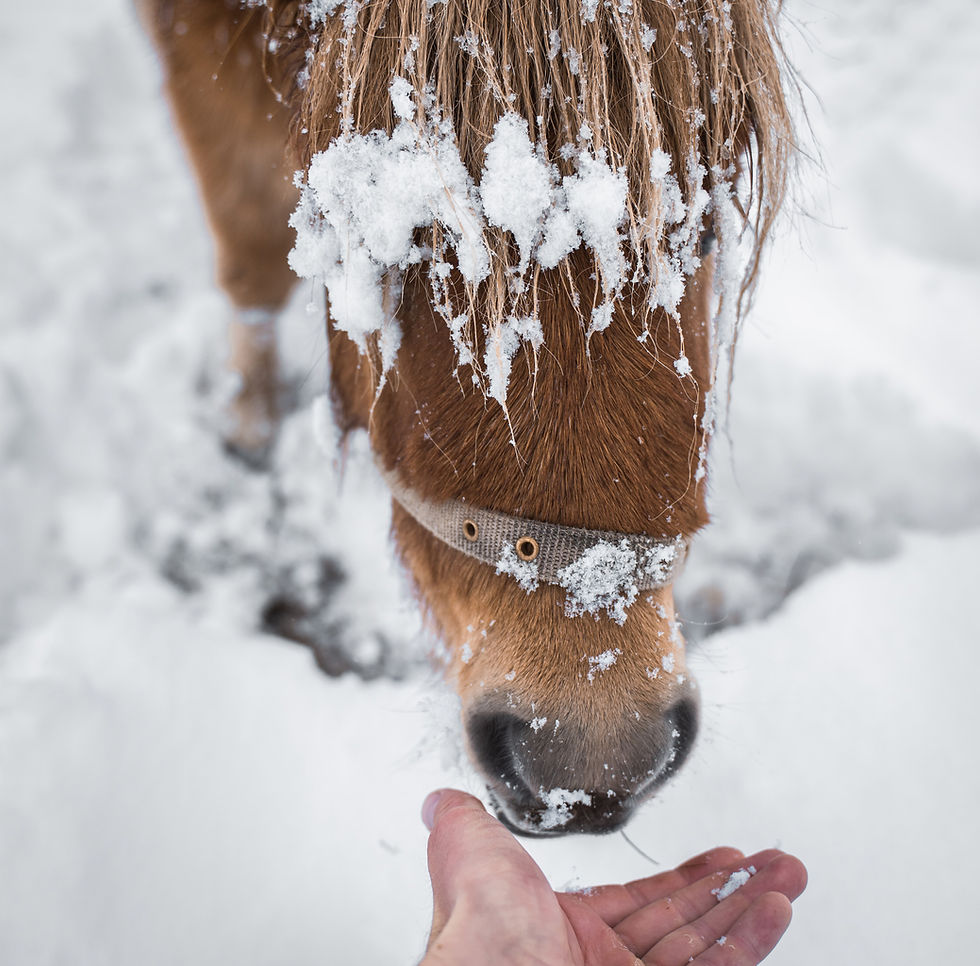The Hidden Downsides of Over-Blanketing Your Horse
- Balanced Bodyworks
- Oct 31
- 2 min read

As horse owners, we often blanket with love, literally. It’s natural to want to keep our horses warm and cozy through the cold months. But sometimes, our good intentions can actually do more harm than good. Over-blanketing, or even unnecessary blanketing, can interfere with your horse’s natural ability to regulate temperature, create physical imbalances, and even contribute to tension patterns throughout the body.
Your Horse’s Natural Thermostat
Horses are built to handle the elements far better than we often give them credit for. Their coats naturally grow thicker in cooler months, and their bodies are designed to trap warm air close to the skin. When we blanket too early or too heavily, we can disrupt this natural process, preventing proper coat growth and confusing their internal thermostat. Over time, this can make them more dependent on blankets instead of resilient to temperature changes.
Physical Side Effects of Over-Blanketing
A heavy or ill-fitting blanket can restrict movement, put uneven pressure on muscles, and cause tension across the shoulders, withers, and back. These subtle restrictions can lead to postural imbalances and discomfort that show up as stiffness, shortened strides, or even behavioral changes. Over time, that tension can ripple through the body, contributing to issues that may require more frequent bodywork sessions to help relieve blanketing issues.
Skin and Circulation Concerns
Too many layers or long-term blanket use can trap moisture and dirt against the skin, leading to rubs, sores, and fungal infections. It can also reduce healthy air circulation, especially if the horse is sweating underneath. Horses with heavier blankets sometimes even lose muscle tone as their bodies no longer need to generate natural warmth through movement.
Finding the Right Balance
Blanketing can still have its place including for clipped horses, seniors, or those who struggle to maintain weight in harsh conditions. ***The key is to make it intentional, not automatic.*** Monitor weather changes, check under the blanket regularly, and allow your horse periods of natural exposure so their body can stay in tune with the environment.
Supporting the Body Naturally
If your horse has been blanketed frequently, gentle bodywork techniques like Equi-Bow and craniosacral therapy can help release accumulated tension and restore healthy circulation. These modalities support the horse’s innate ability to regulate itself both physically and energetically, allowing your horse to move and feel more balanced, inside and out.
At Balanced Bodyworks, we believe in supporting horses as nature intended by honouring their instincts, resilience, and unique needs. Sometimes, the best care we can offer is to trust their bodies and listen to what they’re telling us.





Comments